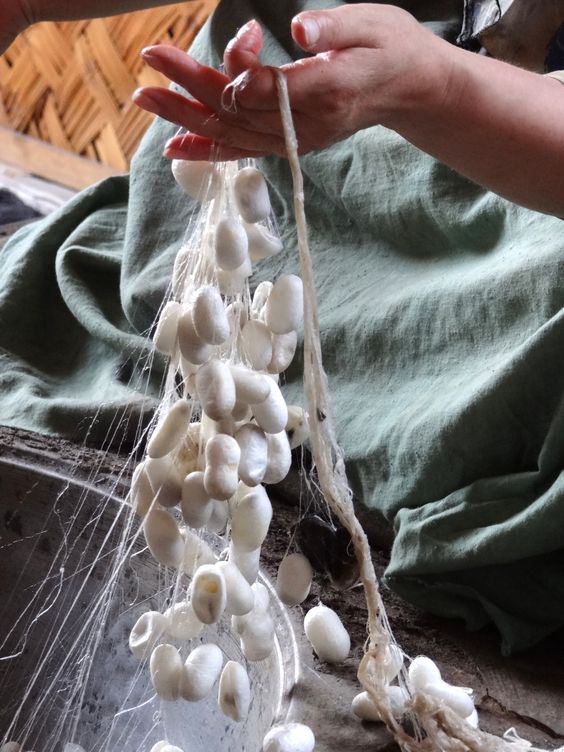Silk, with its luxurious feel and elegant sheen, has fascinated humanity for thousands of years. This exquisite fabric, synonymous with richness and opulence, has a creation story as intricate and delicate as the threads themselves. The process of making silk is an ancient art, a testament to human ingenuity and nature's marvels. Let's unravel the journey of silk, from cocoon to cloth, and appreciate the labor of love behind every silken weave.
The Origins of Silk
Silk production, or sericulture, traces its roots back to ancient China, around 2600 BC. Legend has it that Empress Leizu discovered silk when a mulberry silk cocoon fell into her tea and began to unravel, revealing a long, lustrous thread. This serendipitous discovery led to the domestication of the silkworm, Bombyx mori, and the development of sericulture, a practice that would remain a closely guarded secret for millennia.
The Life Cycle of a Silkworm
The journey of silk begins with the silkworm, a caterpillar of the domesticated silk moth. The cycle starts when the moth lays eggs, from which hatch silkworm larvae. These larvae are fed a strict diet of mulberry leaves, upon which they thrive and grow rapidly. After weeks of continuous eating and several moltings, the silkworms are ready to spin their cocoons.
Spinning the Cocoon
The silkworm attaches itself to a secure frame, twig, or tree, and begins to spin a cocoon by moving its head in a pattern. It secretes a proteinaceous silk liquid from its salivary glands, which hardens upon contact with air, forming the silk fiber. It takes about 2-3 days for a silkworm to fully encase itself in a cocoon, using a single continuous silk thread that can be up to 900 meters long.
Harvesting the Cocoons
Once the cocoons are spun, they are carefully harvested and sorted for the silk reeling process. However, to preserve the continuous thread of silk, the pupa inside must not emerge as a moth, which would break the silk filament. Therefore, cocoons are gently heated, a process that allows for the extraction of silk threads without interruption but prevents the moth from developing.
Reeling the Silk
The next step is reeling, where the silk thread is unwound from the cocoon. This is typically done in a warm water bath, which softens the sericin (silk gum) and allows the filaments to be unwound. Several cocoons are reeled together to produce a single strand of raw silk. This delicate process requires great skill to ensure the threads are of uniform quality and thickness.
Weaving Silk Fabric
Once the silk threads are reeled, they are twisted and treated to create various types of silk yarn, suitable for different textures and weaves. The yarn is then woven into fabric using traditional looms or modern weaving machines, depending on the desired finish and complexity of the design. This step can vary greatly, as the weaving techniques and patterns contribute significantly to the fabric's final appearance and texture.
Dyeing and Finishing
The final steps in the silk-making process involve dyeing and finishing. Silk takes well to dyes, allowing for a vibrant range of colors. After dyeing, the silk may undergo several finishing processes, including washing, steaming, and sometimes applying chemicals or treatments to achieve the desired sheen, weight, or texture.
Conclusion
The production of silk is a complex and labor-intensive process, reflecting the harmony between human craftsmanship and the natural world. From the tender care of silkworms to the meticulous steps of reeling, weaving, and finishing, every stage in the journey of silk is steeped in tradition and innovation. This timeless fabric, with its unmatched beauty and softness, continues to symbolize luxury and elegance, a tribute to the intricate process that transforms a humble cocoon into the splendid silk we cherish today.
Photo Credit: Pinterest

